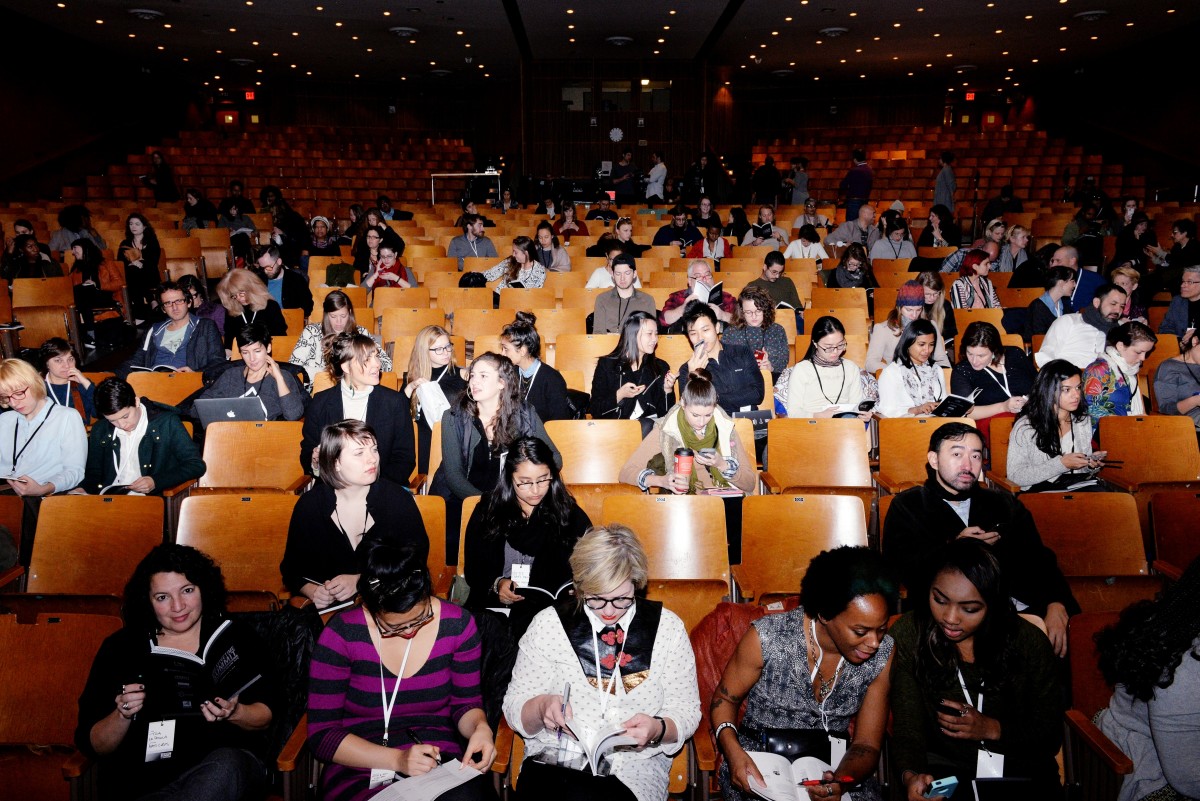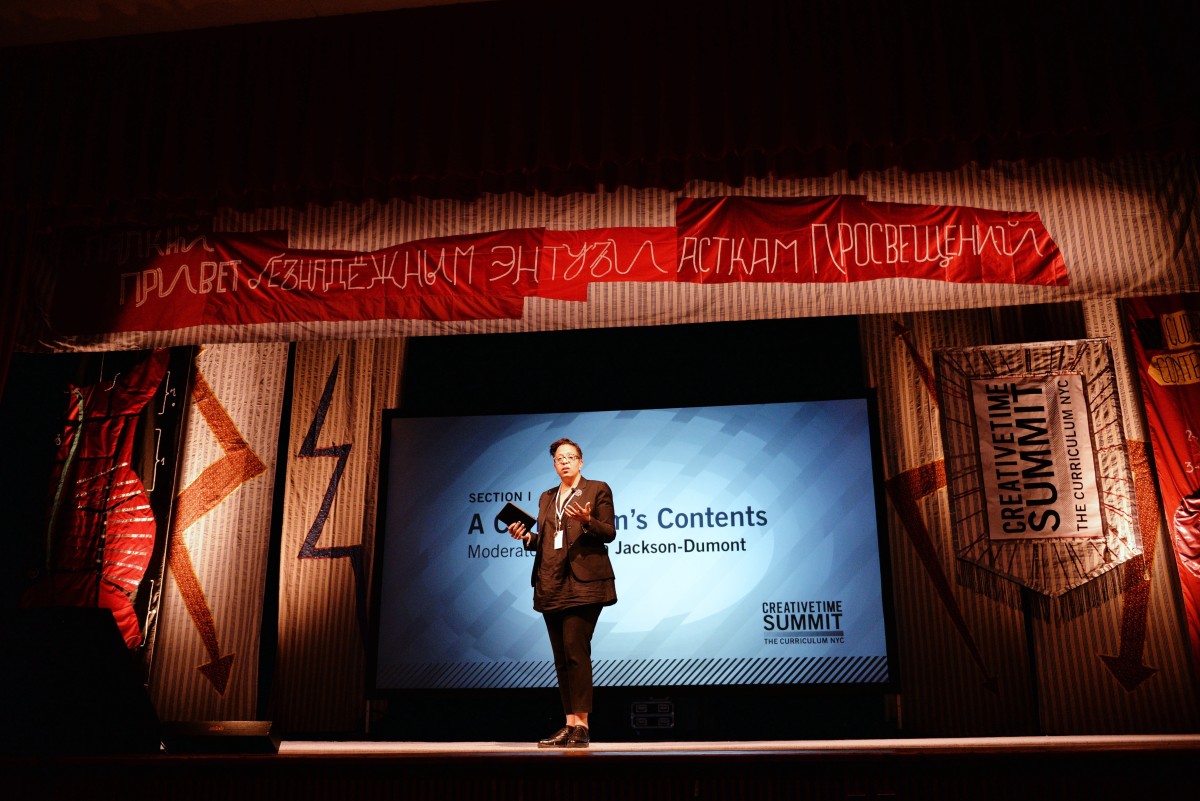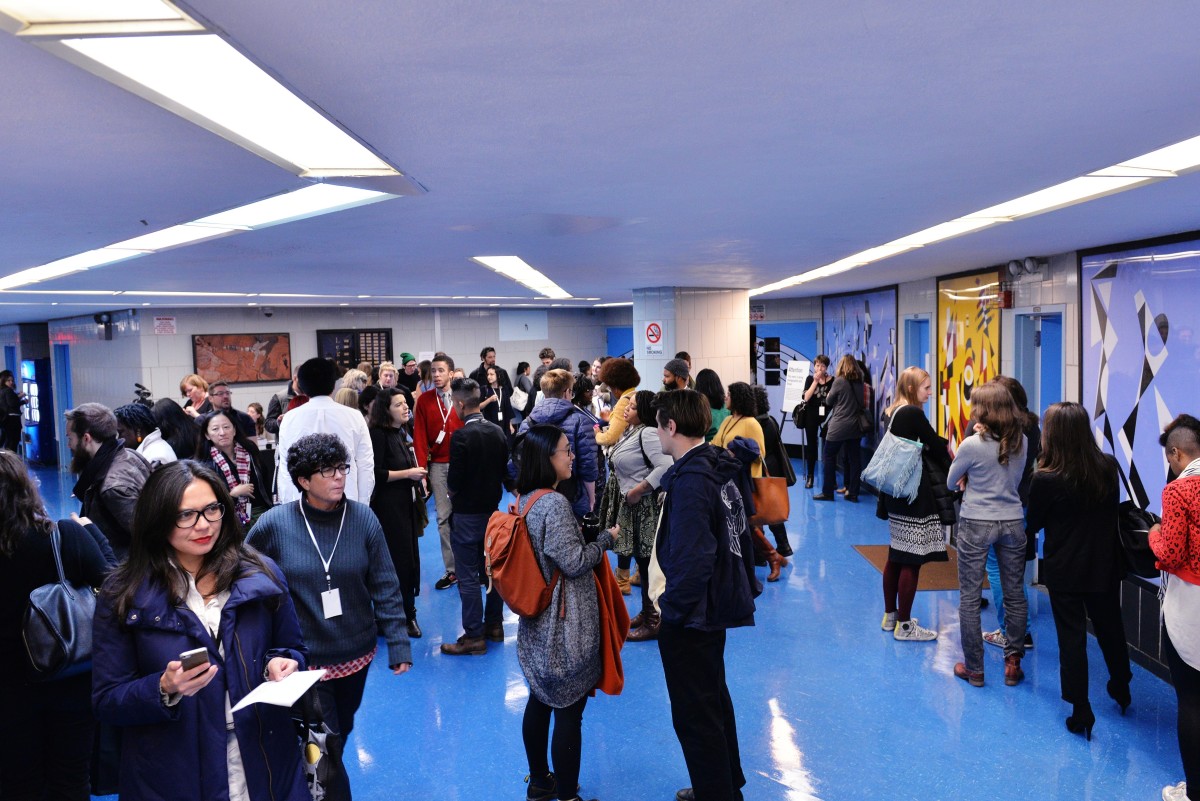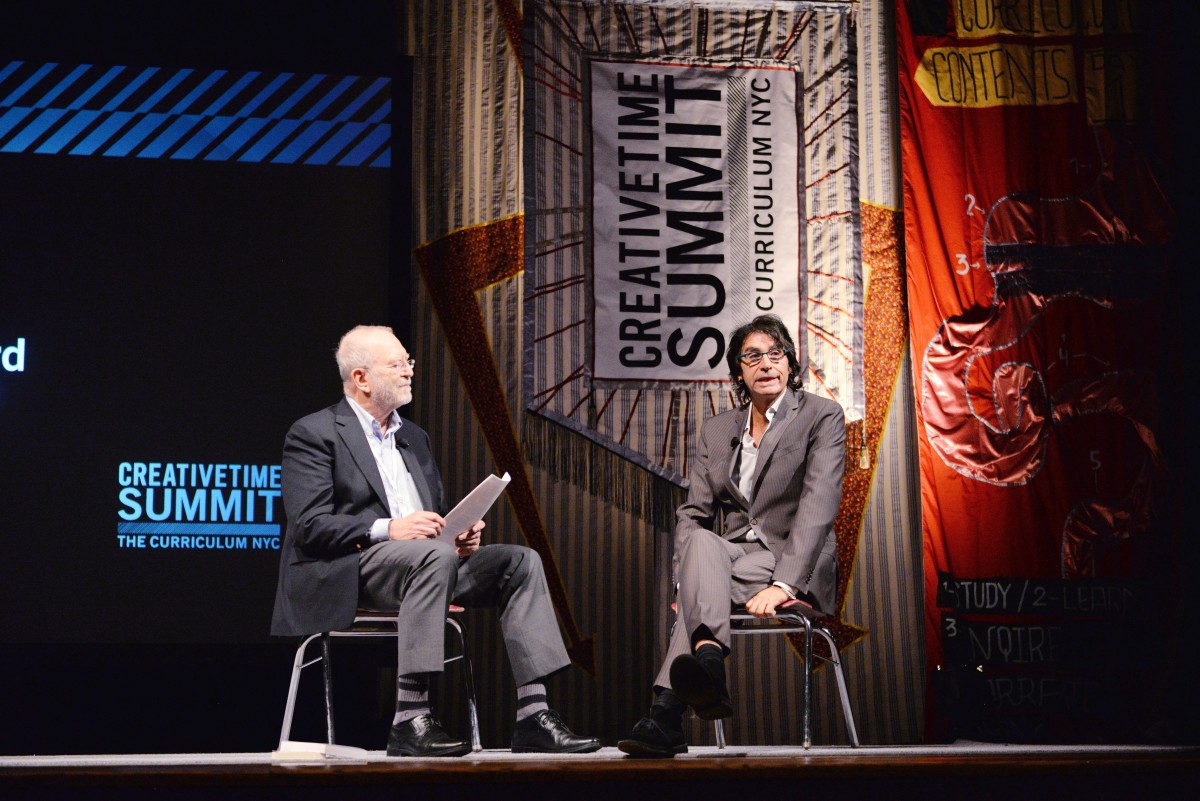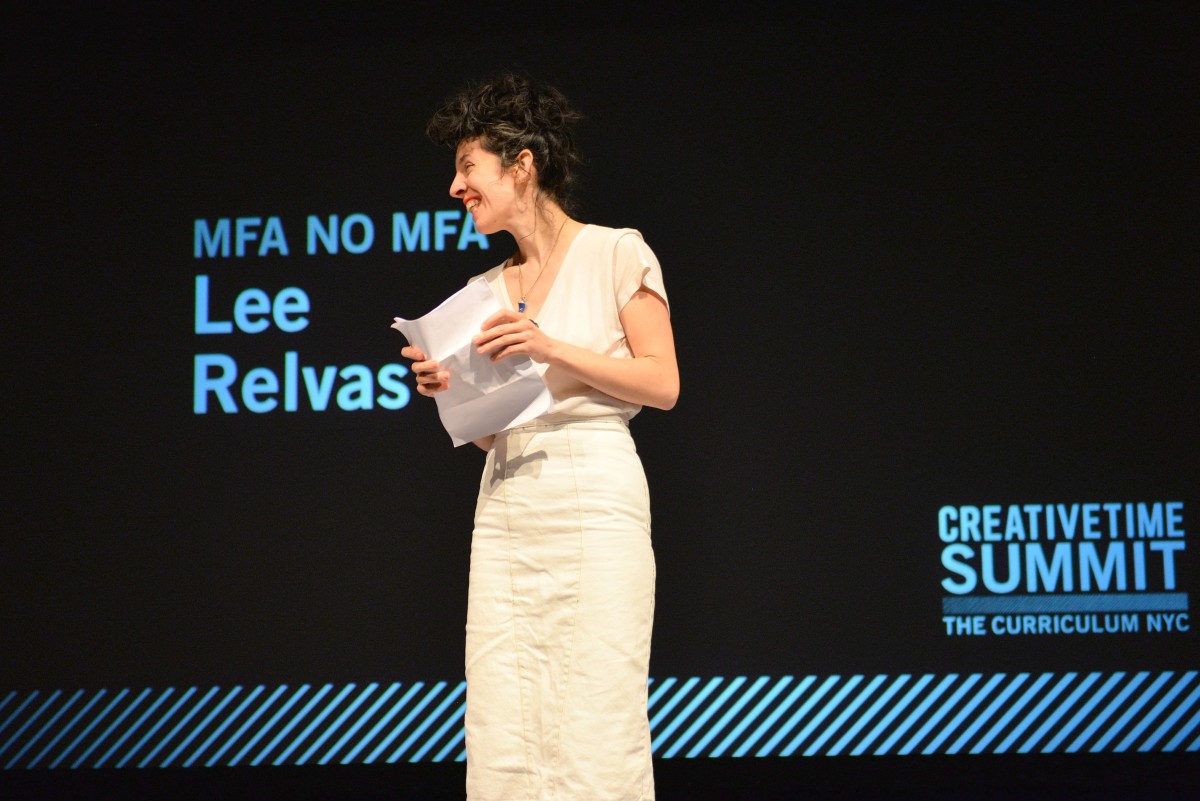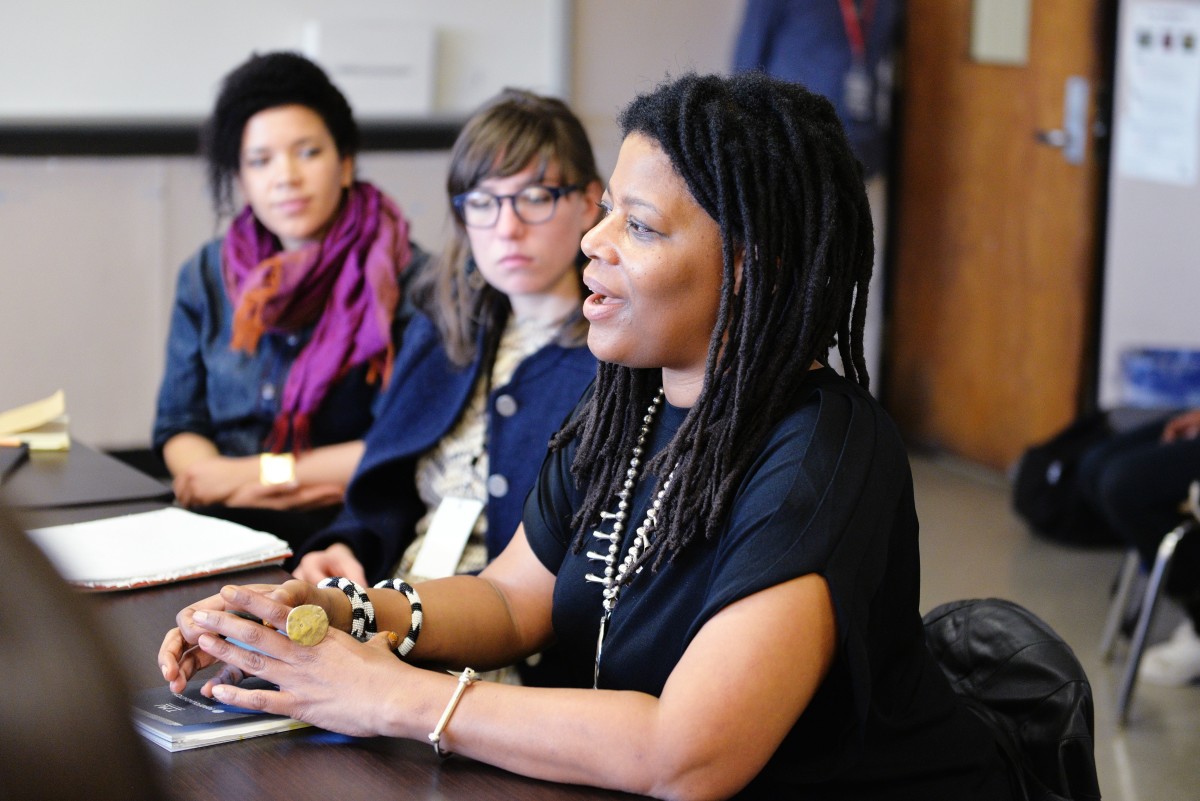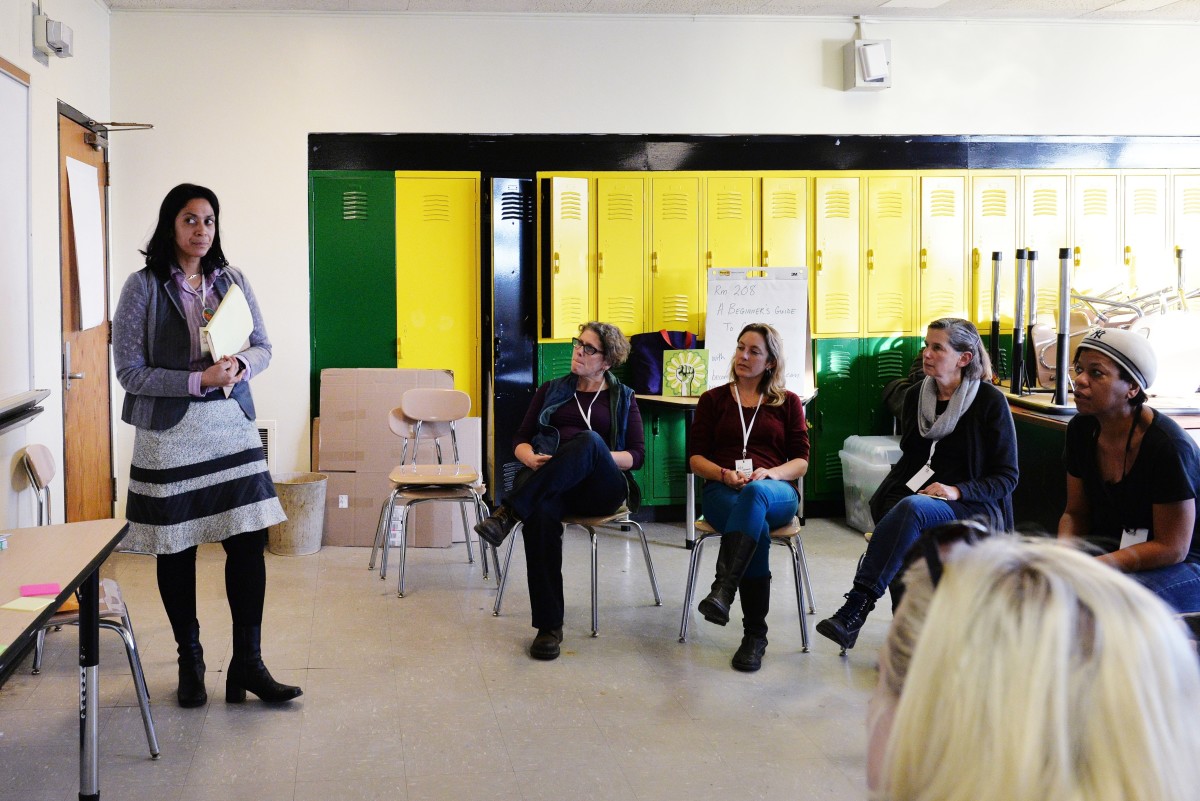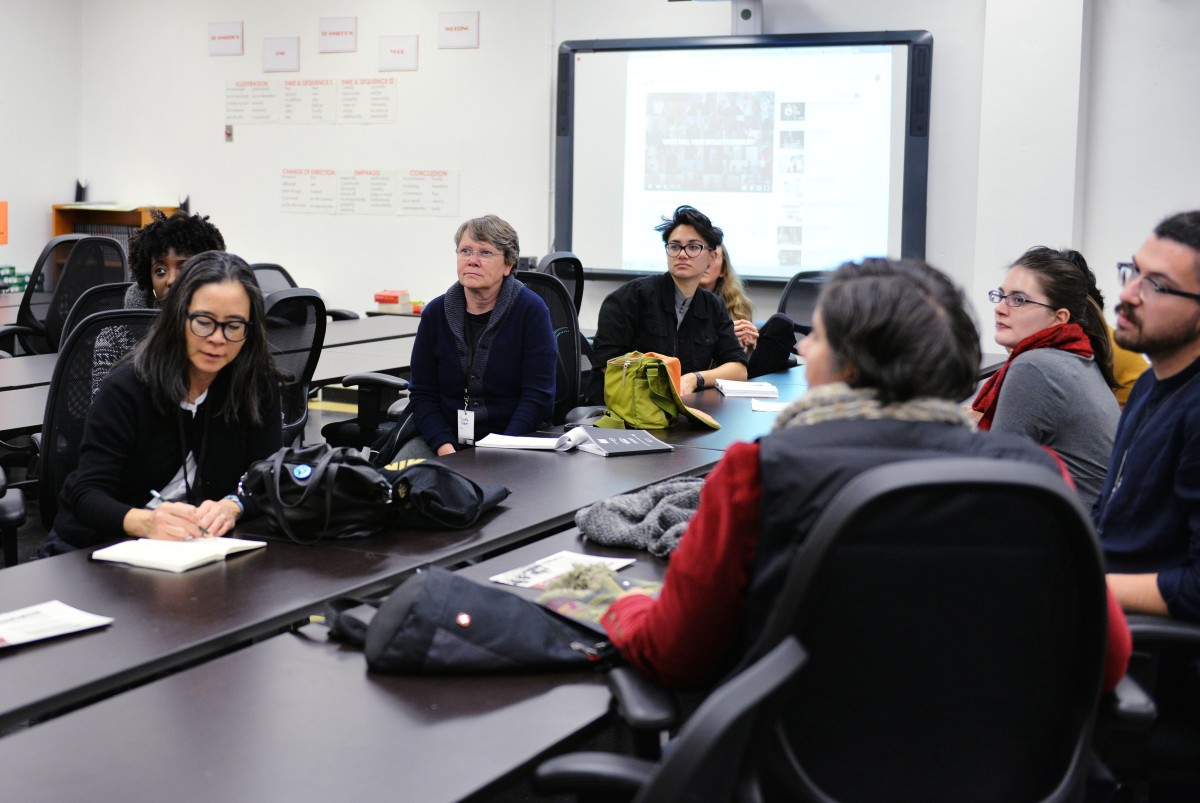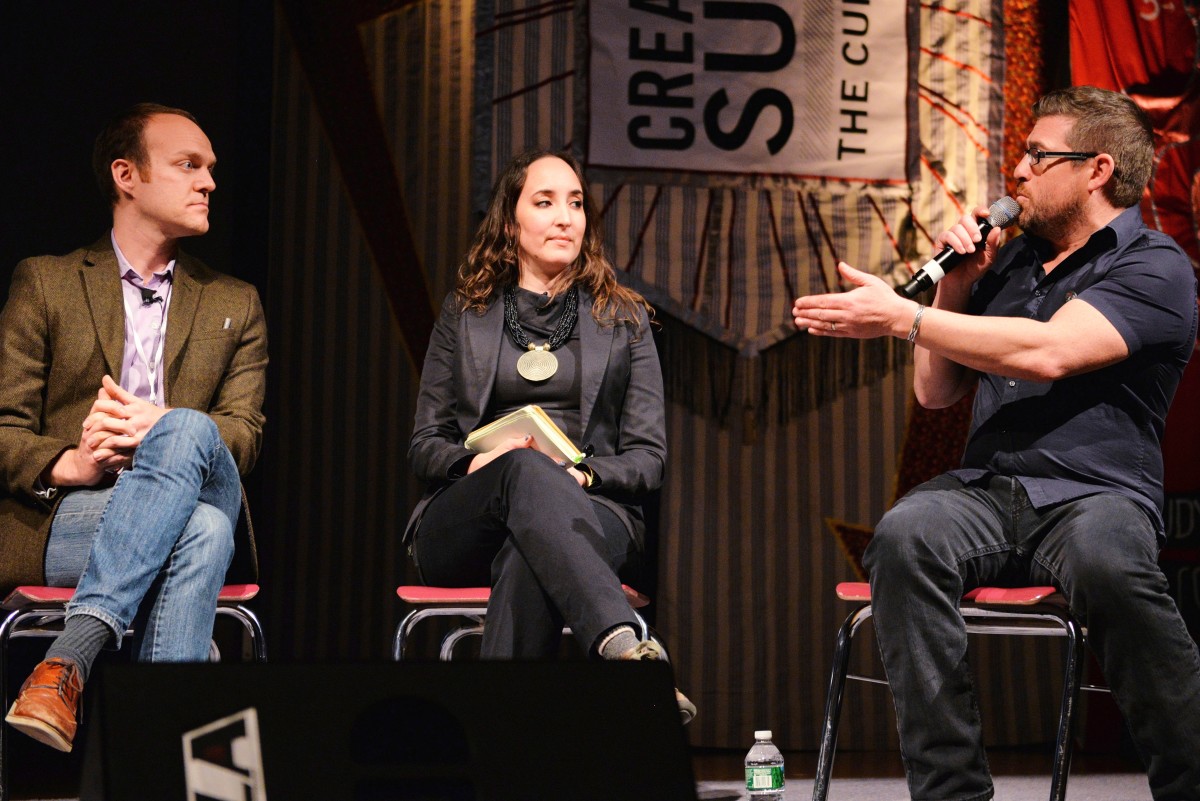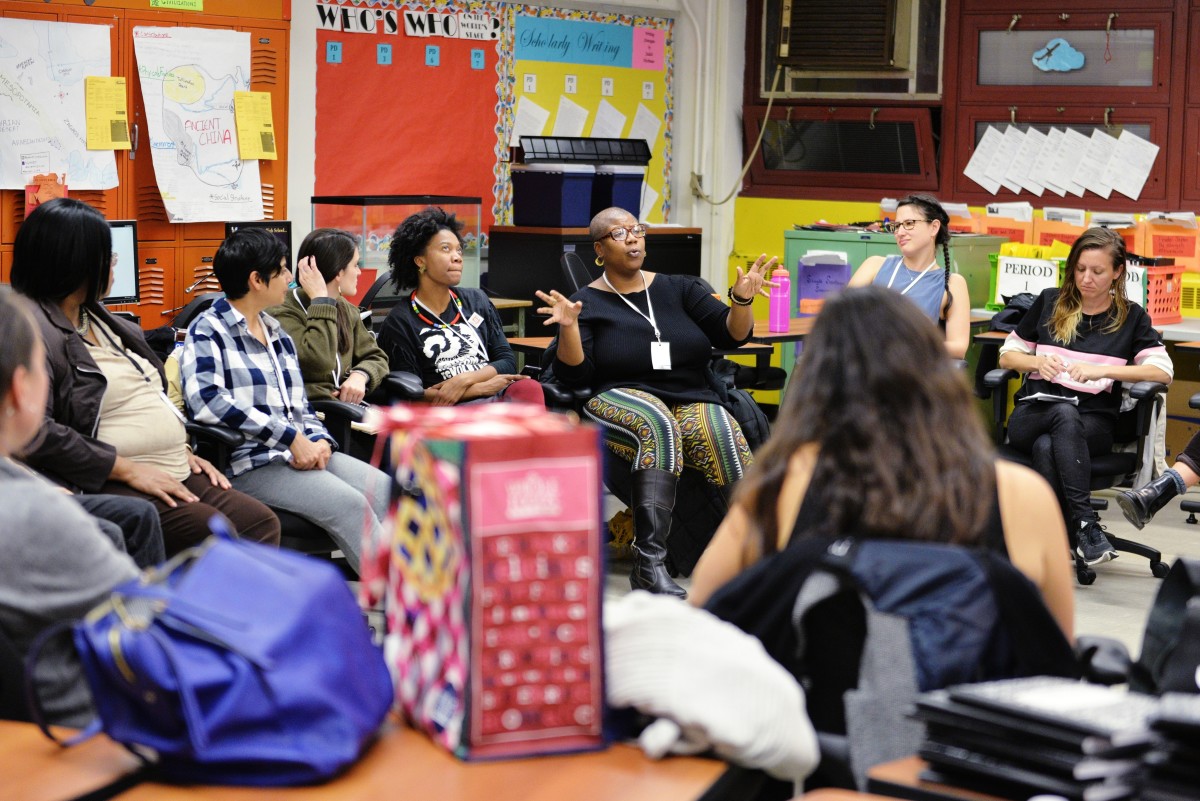By Katrina Woznicki
“Drumming kept me alive,” said world-renowned percussionist Neil Clarke, while he stood onstage with his son, also an accomplished drummer, in front of a packed school auditorium in the Bedford-Stuyvesant neighborhood of Brooklyn. They had just spent several minutes playing drum styles unique to Cuba, Brazil, Senegal, and Ghana. The drums ranged from traditional African-style drums to big, plastic buckets. After their performance, Clarke described how studying music saved his life. “Drumming kept me out of jail. Drumming kept me off drugs.”
Art, he went on, allows students struggling in disadvantaged neighborhoods and schools to “access a wisdom.” Creative expression can indeed serve as a lifeline, giving children and teens living in high-risk communities or who come from troubled homes a voice as well as opportunities for a brighter future. However, student access to arts instruction in the existing public education system is on the decline and there is growing frustration that arts education and career opportunities in the arts are a privilege fewer people can afford. Racial inequality pervades every aspect of American life, including the arts, which have historically been associated with white privilege. While organizations overall are moving toward improving greater support for cultural diversity and inclusion in the arts, there are more groups working hard to tackle head-on the cumulative impact of structural racism in arts and education.
“One of the key issues we’re facing is untying the legacy of structural racism,” said Nato Thompson, chief curator at New York-based Creative Time, a nonprofit public arts organization committed to advancing social causes by holding an annual summit, among other things. This year’s two-day summit was titled “The Curriculum NYC,” and was held at the Boys and Girls High School in Bedford-Stuyvesant in Brooklyn. The conference explored the shortcomings of current curricula, education policy, how kids learn, and how the arts can serve as an alternative to the structural racism and other social and political obstacles students in underserved schools face. Many of the presenters, including guests from Europe and Africa, showcased their own on-the-ground experiences in bringing art to the street.
“There are some artists and some arts whose intentions and methodologies are extremely productive in terms of thinking through the world we want to live in,” Thompson continued. The goal of Creative Time Summit isn’t to directly push for policy changes, Thompson explained, but to encourage cultural change at the ground level, neighborhood by neighborhood. “Minute, personal relationships and small actions add up and make a difference,” he said. “It can be a bit of a slog.”
Tough Numbers
It doesn’t take long to see what kind of slog Thompson is referring to. A 2012 federal government survey found that fewer elementary schools offered visual arts, dance or drama classes compared to a decade ago. Moreover, nearly 4 million elementary school students do not have any visual arts lessons at their schools, and more than 1.3 million elementary school students and 800,000 secondary school students lack access to music instruction. Data was based on the 2009-2010 school year.
State arts agencies received 0.037 percent—less than one half of one tenth of one percent—of state general fund expenditures.
As much as we want to think of America as a land of opportunity, it’s also been documented that schools across the United States are divided by income, socioeconomic status and race. Community dynamics play into school performance and whether a student succeeds. It’s no surprise that for many students, domestic challenges as well as community obstacles contribute to giving up; an estimated 1.1 million high school students drop out every year. However, there have been some improvements in reducing dropout rates among blacks and Hispanics; with graduation rates increasing 4.2 percent for Hispanic students, 3.7 percent for black students, and 2.6 percent for white students since 2011.
Funding is always an issue, however, and the 2008-2009 national economic downturn affected all sectors dependent on federal funds, including the arts. States and local municipalities did what they could with their own limited coffers; according to a recent report from the National Assembly of States Arts Agencies, state arts agencies received 0.037 percent—less than one half of one tenth of one percent—of state general fund expenditures. While that sounds like a drop in the bucket, groups dependent on state arts agency support made the most of what they were given; that 0.037 percent supported approximately 21,000 projects led by groups, schools, organizations and individual artists in 4,400 communities across the country.
Arts education is hugely impactful and there are data to back this up: students who study art both in school and in after-school programs are four times more likely to be recognized for academic achievement and three times more likely to commended for school attendance. Kids from low socio-economic backgrounds who are highly involved in the arts have a far lower school dropout rate than peers not as involved in the arts, 4 percent versus 22 percent, respectively.
Simply put, art keeps kids excited about school and about their world, a point Clarke echoed after playing the drums. According to a 2014 report from US Department of Education Office for Civil Rights, black students represent 16 percent of the student population, but 32-42 percent of students suspended or expelled. Black students are suspended or expelled at triple the rate of white students, 16 percent annually versus five percent, respectively. Black girls in particular faced suspension more than boys or any other ethnic group at 12 percent (white girls were at 2 percent). American Indian and Native-Alaskan students account for less than 1 percent of the student population but represent 2 percent of out-of-school suspensions and 3 percent of expulsions.
Telling the Untold Stories
How can art affect such statistics as well as some deeply ingrained social dynamics? The Summit included presentations, workshops and performances and brought together more than 800 leaders and advocates in art, social justice, community organizing, anthropology and education that approached this question from several different points of view. The goal was to discuss ways in which arts programs outside of the conventional education system can combat structural racism, build positive cultural identities, and foster stronger community ties and artistic expression among voices that have been historically sidelined.
Summit guest speaker Tia Powell Harris cited a lovely example on what creative options for learning exist outside the traditional classroom environment. Now president and executive director of the Weeksville Heritage Center in Brooklyn, Powell Harris explained to an audience of students, teachers, activists and artists how preserving the history of an almost-lost 19th century community of the first free blacks in America led to new ways of learning and experiencing history for students.
“Art can tap into their curiosity, help them develop a new kind of language.”
“There are so many untold stories of American history,” Powell Harris said, that are overlooked in conventional classroom texts. “The black narrative is missing in school curricula. We like to focus on emancipation history. Historic sites, museums and art can help fill those gaps.”
Internationally renowned artist and social justice advocate Pepòn Osorio agrees. Also a guest speaker at the Summit, he presented details of his current project reFORM, which recently launched earlier this year and is funded by the Pew Center for Arts and Heritage. reFORM focuses on several Philadelphia schools that were closed in 2013 by city officials due to budget constraints. Osorio was asked to create an installation in response to these closings. He took things a step further by inviting students in the community to participate in a major art installation project at Temple Contemporary, the gallery of the Tyler School of Art at Temple University in Philadelphia. reFORM explores the impact these school closings had on students, families and the surrounding communities by using discarded items such as chalkboards and desks from the closed schools in art pieces. Meanwhile, the gallery’s walls, ceilings, and floors are covered with moving images, such as vintage photos and class portraits from the closed schools.
Osorio said conferences like the Summit are invaluable because they keep the dialogue going and help people develop creative ways to circumvent a “Euro-centric curriculum.” “Standardized education doesn’t reflect kids’ realities today,” Osorio said. “We need to keep them curious and engaged, and current education policies and the structure of many city schools leave kids behind, which creates a friction. Art can tap into their curiosity, help them develop a new kind of language.”
Backyard Resources
Racial and education inequality are rampant across America, from the East Coast to the West Coast, from major cities to rural communities. Critics have long pointed out that one’s zip code determines one’s access to not only a quality education, but also to health care and may even determine your lifespan. Summit speakers as well as artists and activists in attendance recognized this, largely choosing to focus on making incremental changes at street level instead of pushing for policy changes at the systems level.
Reducing these disparities will be a long game, one that will require the next generation and likely their kids and their kids’ kids. Osorio noted this, saying that to keep the conversation going, which is what’s needed to continue chipping away at these problems and drawing attention for change, you need a pipeline of young people. “What’s missing from this Summit are the voices of students,” he said. “We need more young people and young people’s voices here. There’s a lot of adults saying what needs to be done but where are the students saying what they want?”
Indeed, the roster included seasoned representatives from the New York Times, the Metropolitan Museum of Art and other institutions, universities, New York’s city council, as well as New York radio celebrity Leonard Lopate of WNYC. But the roster also reflected what attendee Kendra Ross saw as a significant asset—New York City itself.
“New York City is such a city full of artists that contribute heavily to the region’s economy and it just makes sense to give students access to that industry, said Ross, a 30-year-old community organizer and dancer who founded STooPs, a program based in her neighborhood of Bedford Stuyvesant where the Summit was held that encourages neighborhood artistic expression, from dance and performance to visual arts and video. Ross was invited to attend the Summit. She attended a workshop led by Stan Kinard, a Brooklyn-based activist, titled “Collective Impact and Student Activism” that also emphasized young people need to be heard and involved.
“What I took from that workshop is the reaffirmation of integrating youth in the leadership of my work and cultural relevancy to my audience,” said Ross, who appeared excited to attend and connect with people “in the flesh.”
However, despite being upbeat, Ross exhibited an awareness of the time, energy and commitment effective community activism requires. It’s hard work in any community, particularly in communities that need. ” I live, work, shop and hang out in Bed-Stuy. Racism is inescapable in this country, but the arts,” she said perking up, “have a capacity to highlight and expose what’s going on and inspire people on a visceral level to change.”

